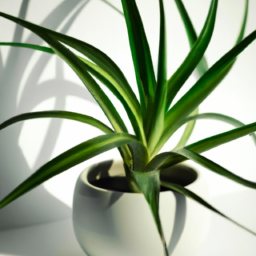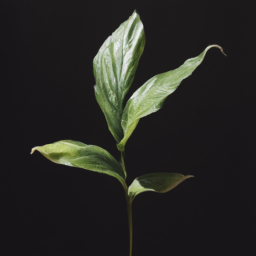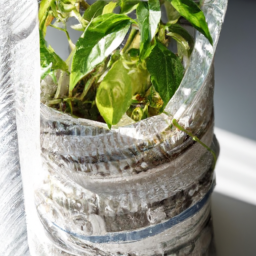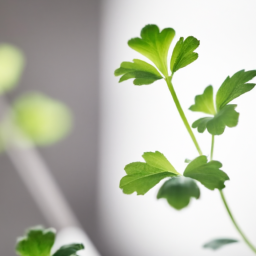
Are you looking to optimize your indoor garden or houseplants for maximum growth and health? One key factor to consider is the color of light that your plants are receiving. In this blog post, we will explore the best color light for plant growth and how you can ensure that your plants are getting the right kind of light to thrive. By understanding the importance of light color in plant growth, you can make informed decisions about the lighting setup for your plants to help them reach their full potential. So, let’s dive in and discover the best color light for plant growth!
Benefits of Using Different Color Lights for Plant Growth
Introduction
When it comes to growing plants indoors, lighting is one of the most important factors to consider. Different colors of light have varying effects on plant growth, as each color corresponds to a different wavelength that influences different aspects of plant development. In this article, we will explore the benefits of using different color lights for plant growth and how you can optimize your indoor garden with the right lighting.
Red Light
Red light is crucial for plant growth as it plays a key role in photosynthesis, the process by which plants convert light energy into chemical energy to fuel their growth. Red light has a longer wavelength compared to other colors, making it ideal for promoting stem and leaf growth. It also helps plants produce more flowers and fruits, making it essential for flowering and fruiting plants.
In addition to promoting growth, red light also influences the plant’s circadian rhythm, which regulates various physiological processes such as flowering, germination, and dormancy. By providing plants with the right amount of red light, you can ensure they receive the necessary cues to thrive and develop properly.
Moreover, red light can help plants absorb more nutrients and water, leading to healthier and more robust growth. When used in combination with other colors of light, such as blue or white, red light can enhance overall plant growth and productivity.
Overall, incorporating red light into your indoor garden setup can significantly benefit your plants by promoting growth, flowering, and fruiting, as well as optimizing their physiological processes.
Blue Light
Blue light is another essential color for plant growth, particularly in the early stages of development. Blue light has a shorter wavelength compared to red light, making it ideal for promoting compact and bushy growth. It also plays a crucial role in regulating plant morphology, such as leaf size, shape, and orientation.
In addition to promoting vegetative growth, blue light is essential for chlorophyll production, which is necessary for photosynthesis. By providing plants with sufficient blue light, you can ensure they have the necessary resources to produce energy and grow effectively.
Furthermore, blue light can help regulate plant responses to external stimuli, such as light intensity and quality, temperature, and humidity. By incorporating blue light into your indoor garden setup, you can help plants adapt to their environment and thrive under varying conditions.
Overall, blue light is essential for promoting healthy and vigorous plant growth, as well as optimizing their physiological processes and responses to external stimuli. By incorporating both red and blue light into your indoor garden setup, you can provide your plants with the ideal conditions for growth and development.
In conclusion, using different color lights for plant growth can have significant benefits for your indoor garden. By understanding the unique properties of each color and how they influence plant development, you can optimize your lighting setup to promote healthy growth, flowering, and fruiting. Experiment with different combinations of red, blue, and white light to see what works best for your plants and watch them thrive in your indoor garden.

Understanding the Role of Light Spectrum in Plant Growth
The Importance of Light Spectrum for Plants
When it comes to the growth and development of plants, light plays a crucial role. Different wavelengths of light have varying effects on plant growth, with certain colors being more beneficial than others. Understanding the role of light spectrum in plant growth can help you optimize your indoor or outdoor garden for healthier and more robust plants.
One of the key factors to consider when looking at light spectrum is the color temperature of light. Light sources with a higher color temperature, such as blue light, are ideal for promoting vegetative growth in plants. Blue light is essential for photosynthesis and helps plants develop strong, healthy leaves and stems. On the other hand, light sources with a lower color temperature, such as red light, are better suited for flowering and fruiting stages of plant growth.
In addition to color temperature, the intensity of light also plays a significant role in plant growth. Plants need a certain level of light intensity to thrive, with different species requiring varying levels of light. It’s essential to provide your plants with the right amount of light to ensure optimal growth and development.
Another important factor to consider is the duration of light exposure. Plants require a certain amount of light each day to carry out photosynthesis and other essential processes. Providing your plants with the right amount of light exposure can help them grow faster and produce higher yields.
Choosing the Best Color Light for Plant Growth
When it comes to choosing the best color light for plant growth, it’s essential to consider the specific needs of your plants. As mentioned earlier, blue light is ideal for promoting vegetative growth, while red light is better suited for flowering and fruiting stages. Many indoor growers opt for full-spectrum LED grow lights, which provide a balanced combination of blue, red, and other wavelengths of light.
If you’re growing plants that require more blue light, such as leafy greens or herbs, you may want to consider using LED grow lights with a higher proportion of blue light. Conversely, if you’re growing plants that are in the flowering or fruiting stage, you may want to opt for LED grow lights with a higher proportion of red light.
It’s also essential to consider the intensity and duration of light exposure when choosing the best color light for your plants. Make sure to provide your plants with the right amount of light intensity and duration based on their specific needs. Monitoring your plants’ growth and adjusting the light settings accordingly can help you achieve optimal results.
In conclusion, understanding the role of light spectrum in plant growth is essential for optimizing your garden and ensuring healthy and robust plants. By considering factors such as color temperature, intensity, and duration of light exposure, you can choose the best color light for your plants’ specific needs. Experimenting with different light settings and monitoring your plants’ growth can help you achieve the best results in your indoor or outdoor garden.

Comparing Different Color Lights for Optimal Plant Growth
Introduction
When it comes to growing plants indoors, one of the most important factors to consider is the type of light you are providing them. Different colors of light have different effects on plant growth, so it’s crucial to choose the right one for your specific plants. In this article, we will compare the different color lights commonly used for plant growth and help you determine which one is best for your indoor garden.
Red Light
Red light is essential for plant growth as it plays a crucial role in photosynthesis. Plants absorb red light more efficiently than any other color, making it crucial for their growth and development. Red light is especially important for flowering and fruiting plants, as it promotes blooming and fruit production. When using red light for plant growth, make sure to provide a sufficient amount to ensure healthy and robust growth.
In addition to its role in photosynthesis, red light also helps plants regulate their growth and development. It can stimulate the production of hormones that control plant growth, leading to stronger and healthier plants. When using red light for plant growth, it’s important to provide a consistent and adequate amount to ensure optimal results.
Overall, red light is essential for plant growth and development, making it a crucial color to consider when setting up your indoor garden. Make sure to provide your plants with enough red light to promote healthy growth and development.
Blue Light
Blue light is another important color for plant growth, as it plays a crucial role in photosynthesis. Plants absorb blue light to produce energy, making it essential for their growth and development. Blue light is especially important for leafy green plants, as it helps them produce chlorophyll and grow strong and healthy leaves.
In addition to its role in photosynthesis, blue light also helps plants regulate their growth and development. It can stimulate the production of hormones that control plant growth, leading to stronger and healthier plants. When using blue light for plant growth, make sure to provide a sufficient amount to ensure optimal results.
Overall, blue light is essential for plant growth and development, making it a crucial color to consider when setting up your indoor garden. Make sure to provide your plants with enough blue light to promote healthy growth and development.
Green Light
Green light is often considered less important for plant growth compared to red and blue light. While plants do absorb some green light for photosynthesis, they do so less efficiently than red and blue light. As a result, green light is often considered less crucial for plant growth and development.
However, some studies suggest that green light can have positive effects on plant growth. It can help plants regulate their growth and development, leading to stronger and healthier plants. While green light may not be as essential as red and blue light, it can still play a role in promoting healthy plant growth.
Overall, while green light may not be as crucial for plant growth as red and blue light, it can still have positive effects on plant development. Consider incorporating green light into your indoor garden setup to promote healthy and robust plant growth.
In conclusion, when it comes to choosing the best color light for plant growth, it’s essential to consider the specific needs of your plants. Red light is crucial for flowering and fruiting plants, while blue light is essential for leafy green plants. Green light, while less important, can still have positive effects on plant growth. By providing your plants with the right color light, you can promote healthy and robust growth in your indoor garden.
Let’s recap
When it comes to growing plants indoors, choosing the right color light can make a significant difference in their growth and overall health. Different colors of light have varying effects on plants, with red and blue light being the most crucial for photosynthesis. Red light is essential for promoting flowering and fruiting, while blue light is crucial for vegetative growth.
Ideally, a combination of red and blue light is best for optimal plant growth. LED grow lights are a popular choice for indoor gardening as they can provide the specific spectrum of light that plants need. By understanding the importance of different color lights and how they impact plant growth, you can create the perfect environment for your indoor garden to thrive.
FAQ Compilation:
Q1: What is the best color light for plant growth?
A1: The best color light for plant growth is blue light. Blue light helps with photosynthesis and promotes strong, healthy growth in plants.
Q2: Can plants grow under different colored lights?
A2: Yes, plants can grow under different colored lights, but blue light is the most beneficial for overall plant growth and development.
Q3: How long should plants be exposed to blue light for optimal growth?
A3: Plants should be exposed to blue light for about 14-16 hours a day for optimal growth. This mimics the natural daylight cycle that plants need to thrive.
Q4: Can I use LED grow lights to provide blue light for my plants?
A4: Yes, LED grow lights are a great option for providing plants with blue light. They are energy-efficient and can be easily adjusted to provide the right spectrum of light for your plants.
Q5: Are there any other factors besides light color that affect plant growth?
A5: Yes, besides light color, factors such as temperature, humidity, and nutrient levels also play a crucial role in plant growth. It’s important to create the right environment for your plants to thrive.
Dr. Olivia Green is a botanist with over two decades of experience in indoor plant cultivation. She holds a Ph.D. in Plant Biology and has dedicated her career to researching plant behavior in controlled environments. Dr. Green is passionate about helping plant enthusiasts master the art of indoor gardening through her extensive knowledge and practical insights.


